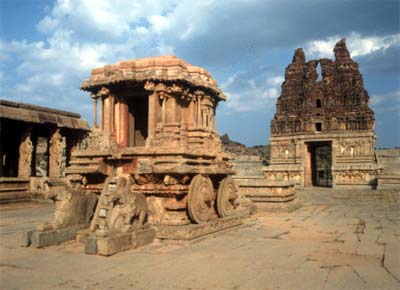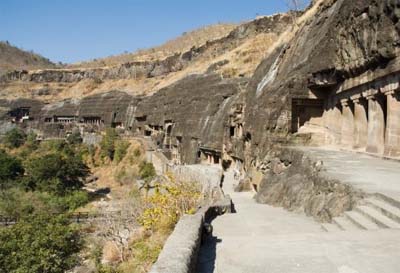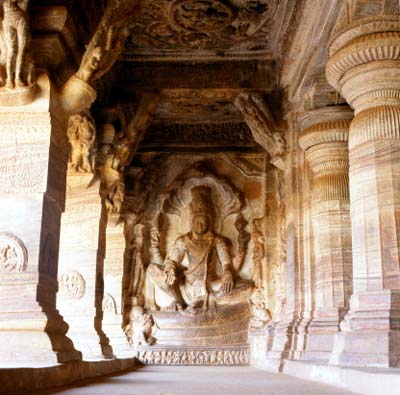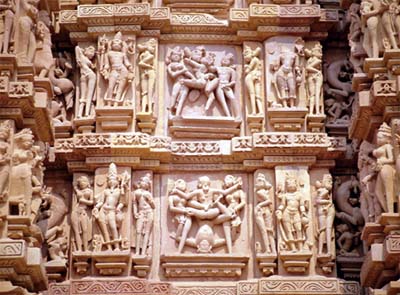Apr 18, 2024
Apr 18, 2024
Samskrita, the Language of the Gods
The Vedic language (later called as Sanskrit) was akin to languages of the European continent spoken by tribesmen around 2000 B.C.E. The earliest surviving Sanskrit literature is the Rig Veda. As time went on many of the words of the original language were forgotten and became obsolete. In 4th Century B.C.E., Panini (a grammarian in Takshashila) wrote a great grammar work in eight chapters called Ashtadhyayi. This standardization of the language resulted in a perfected language called Samskrita (refined language-anglicized as Sanskrit). This classical Sanskrit became the language of the priestly class and later of the governing class. The popular dialect of the language that developed naturally was called as Prakrit or Prakrita, the unrefined language. Prakrit was the spoken language of India for almost a thousand years between Buddha Period to the Gupta Period. The language of the edicts of Ashoka’s time was in Prakrit. Prakrit had several regional dialects. The most popular in the North during Buddha’s period was Pali. Several Buddhist texts were written in Pali. Magadhan Empire had a dialect called Magadhi. Another form was Ardha-magadhi (Half Magadhi) that became the sacred language of Mahavira’s Jains. Other important Prakrits were Saureshi and Maharastri. Bengali and a language used by Jains of Gujarat in the Middle Ages called Apabrahmsa also are derived from Prakrit. All of the modern vernaculars spoken in Northern India today are direct descendents of Sanskrit and Prakrit.
The South however developed its own languages, though Sanskrit influenced them, at a later date. The main languages of the South are: Tamil, Kannada, Telugu, Tulu and Malayalam. Collectively these are called Dravidian languages (Panchbhasha). Sanskrit naturally influenced Tulu, Kannanda and Telugu, spoken, in more northern regions of the South, more than Tamil. Malayalam, which is closely related to Tulu and Tamil, became a separate language in the 11th Century.
The script of the Prakrit language may be similar to the Harappa scripts, though those scripts have not been deciphered. There are visual resemblances between the two scripts. There are no surviving evidences of any scripts during the assimilation of the Vedas or Upanishads. The first evidence of written script is seen at the Ashoka’s inscriptions (written in Brahmi Script). These are from the 3rd Century B.C.E. The inscriptions written on stone pillars not only survived but also demonstrated a sophisticated language of purely Indian descent and led to the belief that the written language had developed in India long before this script. The written language was then spread far and wide, especially to South East Asia during Ashoka’s reign. Whether Brahmi script is related to Harappa script or to the Semitic script is controversial. Local variations to the Brahmi script led to the practice of joining of letters and words together with a line on the top of the letters, like that of today’s Hindi script, and came to be known as Devanagari script (script of the City of Gods). In the South written language flourished in the 5th and 6th Centuries with the language taking a more spherical shape as in Tulu, Kannada and Telugu or the angular Tamil.
Patanjali wrote a treatise on Panini’s grammar. Another grammarian and lexicographer of fame was Amara Simha from the 4th century C.E., the author of Amarakosha, a dictionary of synonyms written in the form of poetry for easy memorization.
Temples of India
 The oldest surviving structures of ancient India are its temples. It gives us a glimpse of the glory of architecture that was taken to its summit with solid stone structures that even today stand as monuments to the richness of the imaginations of the ancient Indians.
The oldest surviving structures of ancient India are its temples. It gives us a glimpse of the glory of architecture that was taken to its summit with solid stone structures that even today stand as monuments to the richness of the imaginations of the ancient Indians.
Glorious temples built by great dynasties of the past stand in proof of one of the greatest civilizations of the world. Though temples have been built in the early history of India, none of them have survived as they were built from wood and clay rather than stone. Cave temples were the first temples that have survived for more than thousand years. Hindu temples were built in stone architecture from about 8th Century on up to 16th Century, especially in the Peninsula. Ornate pillars with stone carved towers stand as monuments of glory to their builders. As the North was already under the influence of the Muslim rule, the independent South took the lead in building glorious architectural masterpieces dedicated to the gods of their belief.
Cave temples and Rock-cut temples
 The most famous of the cave temples are in Ajanta, where there are no less than twenty seven caves that were first carved on the hillside as early as 2nd Century B.C.E and as late as 7th Century C.E., depicting mainly Buddhist teachings. About thirty miles north is the massive Ellora caves, where there are about thirty-four caves, carved between 5th and 8th Centuries C.E. The Rashtrakuta emperor, Krishna I (757-773 C.E.), built the great Kailasa temple here. Also in the 7th Century C.E. seventeen rock-cut temples were built in Mamallapuram (Mahabalipuram), near Chennai by the Pallava kings. Narasimhavarman II Rajasimha added the famous Shore temple in Mamllapuram around 700 C.E. The famous seven pagodas are seen here. In an island off the shores of Mumbai one can see the cave temple called as the Elephanta caves. The colossal Trimurthy figure of Shiva is carved in one of the caves.
The most famous of the cave temples are in Ajanta, where there are no less than twenty seven caves that were first carved on the hillside as early as 2nd Century B.C.E and as late as 7th Century C.E., depicting mainly Buddhist teachings. About thirty miles north is the massive Ellora caves, where there are about thirty-four caves, carved between 5th and 8th Centuries C.E. The Rashtrakuta emperor, Krishna I (757-773 C.E.), built the great Kailasa temple here. Also in the 7th Century C.E. seventeen rock-cut temples were built in Mamallapuram (Mahabalipuram), near Chennai by the Pallava kings. Narasimhavarman II Rajasimha added the famous Shore temple in Mamllapuram around 700 C.E. The famous seven pagodas are seen here. In an island off the shores of Mumbai one can see the cave temple called as the Elephanta caves. The colossal Trimurthy figure of Shiva is carved in one of the caves. Pallavas built temples in Mamallapuram and the Kailasanath temple in Kanchipuram in the 6th and 8th Centuries. Kailasanatha temple of Kanchipuram has a pyramidal tower like a stupa (of Buddhism) over the shrine. The Chalukyas were busy with their own temples in Badami, Aihole and Pattadakal. Two remarkable temples in Pattadakal were built by two sisters in commemoration of the victories of their husband, Chalukya Vikramaditya II over the Pallavas. These are the Mallikarjuna and Virupaksha temples of Pattadakal. The Nataraja temple in Chidambaram was built between 6th and 8th Centuries. The great Bhrihadishvara temple of Tanjavur was built by Rajaraja Chola (985-1014). His son, Rajendra Chola built the temple near Kumbakonam. Both these temples contain elaborate pillars and halls with beautiful designs. In addition they have glorious pyramidal towers (Shikara or Vimana) of carved stone, rising two hundred feet into the air over the sanctum sanctorum (garbha griha). The Pandya kings, who supplanted the Chola dynasty, built fortified temples with colossal towers at the entrance way (called the gopuram) rather than over the shrine itself. They added to Pallava temples or built new ones as in Madurai and in Srirangam.
Pallavas built temples in Mamallapuram and the Kailasanath temple in Kanchipuram in the 6th and 8th Centuries. Kailasanatha temple of Kanchipuram has a pyramidal tower like a stupa (of Buddhism) over the shrine. The Chalukyas were busy with their own temples in Badami, Aihole and Pattadakal. Two remarkable temples in Pattadakal were built by two sisters in commemoration of the victories of their husband, Chalukya Vikramaditya II over the Pallavas. These are the Mallikarjuna and Virupaksha temples of Pattadakal. The Nataraja temple in Chidambaram was built between 6th and 8th Centuries. The great Bhrihadishvara temple of Tanjavur was built by Rajaraja Chola (985-1014). His son, Rajendra Chola built the temple near Kumbakonam. Both these temples contain elaborate pillars and halls with beautiful designs. In addition they have glorious pyramidal towers (Shikara or Vimana) of carved stone, rising two hundred feet into the air over the sanctum sanctorum (garbha griha). The Pandya kings, who supplanted the Chola dynasty, built fortified temples with colossal towers at the entrance way (called the gopuram) rather than over the shrine itself. They added to Pallava temples or built new ones as in Madurai and in Srirangam.  As mentioned earlier the temples in the North India vanished during the Middle Ages and even the holy temple at Varanasi was desecrated during the Muslim rule in the North. However, some temples withstood the Muslim assault and miraculously escaped destruction. There is the temple at Khajuraho in Madhya Pradesh built by the Chandella kings of Bundelkhand (late 9th Century). Khajuraho temple demonstrated vivid sculptures of couples in embrace, and with its sexual mysticism was thought to be the center of Tantric cult long ago. During the medieval period temples flourished in Orissa (between 10th and 13th Century), finest of them being the famous Lingaraja temple in Bhubaneswar. In addition there are the Jagannath temple at Puri and the Sun temple at Konarak, built in the 13th Century. Like Khajuraho, evidence of Tantric worship is seen in Konarak. In the Western India the Chaulukyas or Solankis of Gujarat built the famous Jain and Hindu temples in Mount Abu between 11th and13th Centuries. Sculptures made of marble with its cold lifelessness with extremely decorated ceilings, perhaps influenced by the Muslim architecture, are the hallmarks of Mt. Abu.
As mentioned earlier the temples in the North India vanished during the Middle Ages and even the holy temple at Varanasi was desecrated during the Muslim rule in the North. However, some temples withstood the Muslim assault and miraculously escaped destruction. There is the temple at Khajuraho in Madhya Pradesh built by the Chandella kings of Bundelkhand (late 9th Century). Khajuraho temple demonstrated vivid sculptures of couples in embrace, and with its sexual mysticism was thought to be the center of Tantric cult long ago. During the medieval period temples flourished in Orissa (between 10th and 13th Century), finest of them being the famous Lingaraja temple in Bhubaneswar. In addition there are the Jagannath temple at Puri and the Sun temple at Konarak, built in the 13th Century. Like Khajuraho, evidence of Tantric worship is seen in Konarak. In the Western India the Chaulukyas or Solankis of Gujarat built the famous Jain and Hindu temples in Mount Abu between 11th and13th Centuries. Sculptures made of marble with its cold lifelessness with extremely decorated ceilings, perhaps influenced by the Muslim architecture, are the hallmarks of Mt. Abu.
23-Mar-2003
More by : Dr. Neria H. Hebbar

|
Thanks very much for sharing this information. I've been searching on it for a while. So we can conclude that संस्कृति is not older than pali ( प्राकृतिक) but it is refined form of प्राकृतिक dialect. |

|
very nice and ery intrested |

|
very nice pictures and articles |